Reverb might be one of the most underrated effects in a guitarists rig. Some musicians think that they don’t need it for their sound, others don’t know what exactly “reverb” does, but hardcore veterans and professionals know better than that.
Reverb is very tricky to define, so it’s only normal that some people have a tough time understanding what it is. Basically, the “reverb effect” occurs when the soundwaves reflect from the surfaces, generating numerous sound instances that reach our ears at different speeds.
Sometimes, the Reverb effect is called “wet sound”, whereas on the opposite side stands the “dry sound” – a direct soundwave on a straight path which is immediately registered by our ears. There are plenty of ways to utilize reverb in music, and we aim to help you find out what a reverb pedal can do and how to pick the best one available on the market.
How To Choose The Right Reverb Pedal
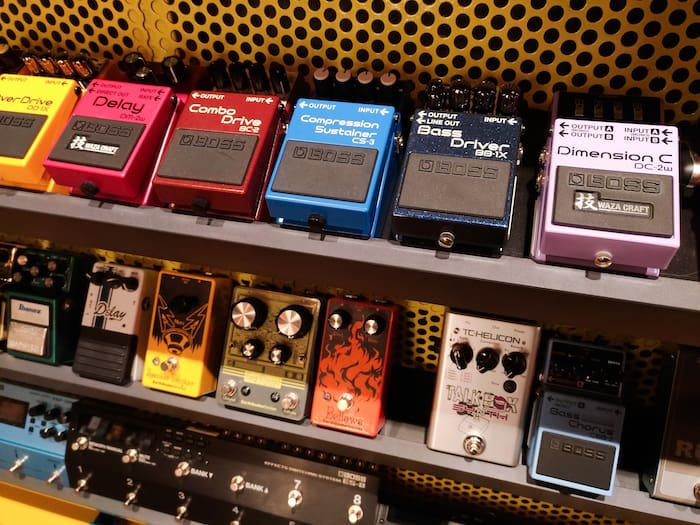
Now that we’ve shed some light on the issue of what “reverb” actually is, it’s time to talk about the things that make the best reverb pedal. The market is brimming with all kinds of reverb pedals, and you shouldn’t just buy any model on a hunch. Check this section out to find valuable information regarding the things you need to consider before making the purchase.
1. What Does A Reverb Pedal Do
Essentially, a reverb pedal should be used to simulate the sound you’d normally get while playing in different environments. Since sound bounces off from every single surface within the given ambient, where you play will always define your sound – reverb pedal takes out the need to switch actual locations, as you can simulate them with a click of a button.
If you are a fan of rock music, you might have already heard that old-school musicians used to record some of their tracks (even albums) in large halls and chambers for better “echoes” on percussions and vocals.
This was, of course, a long time ago, back when reverb pedals were either non-existent or obscure. Some musicians like to do it nowadays too, but that’s more because of the feel.
For instance, renaissance and medieval era were the epochs when people discovered that big halls (such as churches) are ideal spots where you’d get superb reverberation, so sacred music was almost exclusively performed there. That was the idea behind the concept of today’s echo chamber.
Echo chambers are, basically, the first reverb “givers” – before pedals came, many bands recorded their tracks and albums in these big halls which were purposefully constructed with well-positioned obstacles to provide absolutely the best reverb possible. Metallica even has a song which is entitled “Echo Chamber”.
Simply put, with a reverb pedal you’ll be able to generate the echoing, reverberating sound which will complement the other qualities you have onboard your rig.
2. Why Do I Need This Effect?
Certain amps have the “reverb” knob, but it shouldn’t be confused with the actual reverb pedal which generates the “true reverb effect”. This “reverb” knob will only slightly decay your sound and no matter how much you twist the knob, only a faint echo might appear.
Playing live performances usually implies that you already own a sort of echo/reverb pedal, as your sound would otherwise appear dull.
Generally speaking, the reverberation will occur as soon as you start playing – the sound will pass through every crack and crevice of the location you’re playing at, and it will simply bounce from the walls, the crowd, and even your squad mates. The reverb pedal is used to contain and control the effects of this.
3. Reverb Vs Delay Effect
The difference between a delay and a reverb pedal is theoretically huge, but practically small. In practice, the sound you’ll get as the end result of using either a delay or reverb pedal will be defined as shaky, echo-y, or such.
In theory, however, the basic mechanism that generates the reverb is strikingly different from the one that drives the delay. On the other hand, the “delay” effect simply “cuts” the soundwave emissions and plays-back the instances you’ve specified (depends on the settings).
Reverb, on the other hand, simulates the reverberation you’d get in certain environments and enriches the sound with completely different tonal qualities.
4. Types Of Reverb Effects
There are five “grand” types of reverb effects – it’s not a rule, as some brands might be currently working on developing other types or sub-types, but these five are most commonly used and seen on the market.
Hall Reverb
The so-called “Hall reverb” pedals are most widely used as they’re the richest, warmest reverb-type effect pedals of today. You’ve guessed it right – the “Hall reverb” got its name after its capabilities of emulating the sound reverberation effect you’d experience in large halls/large buildings. Hall reverb pedals are almost exclusively digital.
If you have been in theatre recently, you might recall that the sound is enormous regardless of where you are standing. It zaps from one place to the other and is characterized with constant thundering. That’s precisely what a hall reverb pedal does.
This type of reverb pedal is suitable for all kinds of music genres, but it’s favoured by live performers in pop and electronic music. Since these music genres feature pre-mixed sounds, the clarity of tonal quality is greater than, for instance, metal music or rock music which rely on playing accuracy and who are equipped with a totally different set of gear.
Spring Reverb
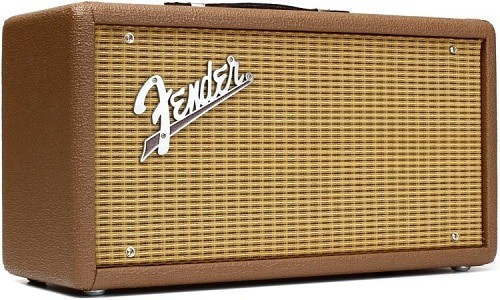
While Hall reverb pedals are digital, most spring reverb pedals are analog in nature. That means that they operate on a completely different (mechanical) concept – they are often large tanks that employ the use of numerous springs that reflect the sounds which create/generate the reverberation effect.
They’re much similar to plate reverb pedals in a way that they both have transducers that shifts the electrical signals into mechanic vibrations via transmission springs. Spring reverbs can be found as either an option on pedals or amplifiers.
Chamber Reverb
Much like Hall reverbs, Chamber reverb pedals are characterized with rich, full vibrations and reverberations. There’s one difference between the aforementioned two, though – halls are substantially larger whereas chambers are small (in comparison), but surprisingly reflective.
Chamber pedals generate the reverberations you’d normally get while playing in a chamber that’s laden with numerous objects (so as to get more reverbs), whereas Hall pedals aim to broaden the range, thus making the sound larger (but not necessarily more reflective).
These pedals are ideal for R&B and rock performers – they aren’t as “huge” as Hall pedals, and they’re certainly not as expensive.
Room Reverb
Room reverb pedals emulate the sound reverberations that generally occur in, well, rooms. As opposed to Hall and Chamber reverb pedals, rooms are incredibly small and perfectly shaped – a room pedal simulates the environment with little (or no) physical obstacles, so the reverberation generated with such a pedal is often plain and natural.
That’s what makes them perfect for smaller gigs and virtually all kinds of music sub genres, although acoustic music tends to sound the best with these pedals.
Plate Reverb
Plate reverb pedals are the hardest to define, that’s for sure. They’re also among the oldest reverb types which sprung up during the 60s.
Essentially, a plate reverb pedal is a plain analog device which operates in a complex way – there’s a suspended thin metal sheet which warps under tension of the springs (sometimes clamps) that are attached to its corners. Next comes the transducer that injects the audio signals straight into this plate between which there are (usually) two contact microphones affixed to it surface that pick up these vibrations, feeding them into preamps.
Basically, people compare Plate reverbs to Hall reverb pedals – they sound similar, but plate pedals offer a denser, flatter sound. Further on that note, plate reverb pedals offer more clarity and brightness, which makes them perfect for musicians that rely on precision, such as metal and rock.
5. Analog Vs Digital Reverb
There are a lot of differences between analog and digital reverbs, and it’s up to you to decide which of the qualities they offer suit you best. Let’s take a look at the five most notable differences between them:
Size
Analog reverb pedals are usually very large, making them somewhat impractical for guitarists who have a complex, large rig. That’s due to the fact that analog pedals operate on a mechanical principle which includes a solid number of hardware pieces.
Digital reverb pedals are incredibly small – the actual reverb generator is usually a chip which isn’t larger than a 1×1 inch. It’s safe to say that Digital reverb pedals are superb for live performances and are often favoured over analog reverb pedals by people who want to save up some space on their rig.
Sound Generation Principle
The sound generation principle heavily affects how the end result with end up. Analog pedals operate on a mechanical way while digital pedals feature electrical hardware.
Analog reverb pedals generate sounds in a mechanical way – the echoes, as well as vibrations are generated via numerous springs within the transducer whereas digital pedals rely on digital calculations of the possibilities of how the natural reverb would appear in the given situation.
Analog reverb pedals are fully mechanical (analog) in nature whereas digital reverb pedals feature digital vibrations and reverberation along with the analog gain and controls.
Response Range
The response range of an Analog reverb pedal is infinite whereas the range of digital reverb pedals is finite – it depends on the algorithm within the contraption.
Sound Diversity
Sound diversity, or sound “color” can be characterised as reverb pedal’s “versatility”. Analog reverb pedals feature a single tank, which basically means that any and all reverberations will be based on it. On the other hand, digital reverb pedals feature multiple digital programs that allow you to switch between various reverb effects.
6. Stereo Or Mono?
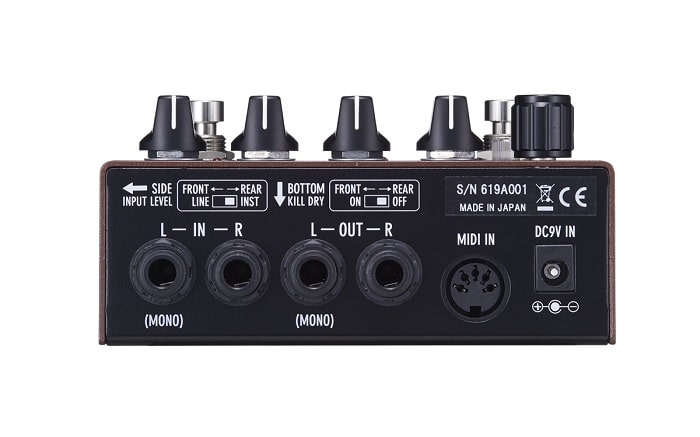
The majority of digital reverb pedals are pre-set to stereo – the exceptions are plate, spring, and real chamber reverb pedals.
Stereo reverb pedals are best utilized when you’re searching for a (not overly) artificial, but easily controllable sound – this is especially important for live musicians who often need to manipulate the reverberations so that the sound may reach the back rows of the crowd.
People who’re searching for a real-space reverb sounds should use mono reverb pedals, as they need the least amount of mixing and are the easiest to use – they simply spice up the sound rather than changing it entirely.
7. True Bypass Or Buffer Bypass?
Most people have only heard about “true bypass” and label it as the only bypass type. The truth is, even though this is a good bypassing scheme, a buffer bypass could come in handy in certain situations.
Musicians who have a huge rig (numerous pedals, hence numerous cables) will accumulate a lot of high-frequency signals in their chain, which means that you’ll sometimes experiencing crackling or popping sounds when bypassing. That means that a true bypass is good for people with a relatively small chain.
Buffer bypass should be used as your chain opener in other situations, as the rest of your chain won’t matter – the buffer will drive it.
8. Your Budget
In essence, pedals on the higher end always offer more versatility – they come with additional sound customization knobs, they are more reliable, and the sound generation is more often than not plainly better. The same applies for reverb pedals.
Generally, cheap reverb pedals are outfitted with a simple set of features – you’ll get a couple of reverb effects at best, but they’re very easy to use on the other hand.
High-end reverb pedals (sometimes referred to as “boutique” reverb pedals) are well-rounded and highly versatile. They come with a considerable amount of reverb types you can switch between, the fine-tuning knobs are in higher number as well, and they usually feature a sturdy casing.
For example, one of Eventide’s high-end models (H9 for example, but even the “Space” could pass) feature “X” and “Y” knobs – that allows you to set the precise “dimensions” of the actual space you want to mimic in order to get the best reverb.
There are other pedals which feature similar settings – Stymon’s Big Sky comes outfitted with “Param1” and “Param2” which basically stand for “parameters” you should input – they do exactly the same job as “X” and “Y” knobs.
Essentially, it’s up to brands to name these knobs, but the features remain the same – recreating the sound you’d get in an actual 3D space, only you’ll get to choose how tall and wide it is.
9. How To Use A Reverb Pedal?
Ideally, your reverb should be the last technical piece of your chain (after all other pedals but before the amp).
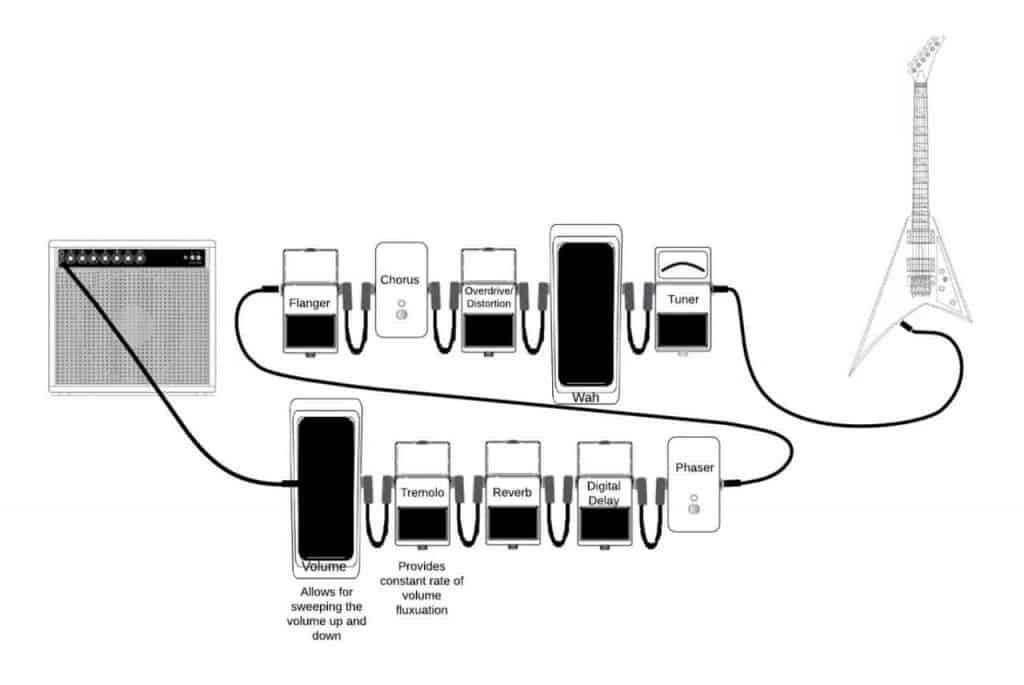
The reasons for that vary from guitarist to guitarist – some people don’t like this pedal to be the last, rather they put it second last, but never in the middle or even close to the beginning. One of the most logical reasons why a reverb pedal should be last in your chain is because it will affect it in its entirety that way. The pedals that you want to remain unaffected should come before it.
Dynamics, filters, and volume shifting pedals are usually first, the gain-based effects second, modulation pedals third, Time-based pedals fourth, after which comes the reverb pedal.
As for the knobs, each pedal comes with different settings, so it would be hard to form a set of uniformed rules. Be it as it may, most reverb pedals should be used in accord to your musical playstyle, so firstly choose which type of acoustic space you want to recreate (e.g. hall, chamber, etc.), then you should do some fine tuning.
The fine tuning consists of tweaking the other knobs – on EarthQuaker’s Avalanche you’ll see “decay” which basically means the “loss of sound” over time, as well as the “repeats” which sort of mimic what delay pedals usually do. Most reverb pedals, however, feature the “Mix” knob, which accentuates (or lower) the presence of this pedal in your chain.
Superb List Of The Best Reverb Pedal
1. Eventide Space Reverb

Eventide’s Space Reverb is first on our list of the best reverb pedal models – it comes from a reputable house and shows quite a lot of promise. It’s packed with a total of 100 presets which are neatly spread across twelve algorithms, so it’s safe to say that this is one of the most versatile reverb pedals you’ll have fun with if you’re new to the concept.
What’s more, there are numerous reverb types for you to enjoy, including Room, Plate, Hall, Blackhole, Reverse Reverb, DualVerb, Blackhole,DynaVerb, and more. Note that this is a digital stereo reverb pedal, so analog-like types (like plate and spring) are meant to simply emulate, not recreate the feel you’d normally get from such pedals.
Even though all presets and reverb types onboard this pedal are great, Shimmer excels more than most. It’s characterized with pitch-shifted reverberations that sound (better yet, resound) in the most exquisite way. This pedal is great for all sorts of music genres, although newbies might not be able to utilize all of its features.
- Relatively easy to use due to plain design
- Numerous side effects and 12 combo reverb effects
- Exceptionally versatile reverb pedal
- Superb value for the cash, even though it’s a bit pricey
- The reverb sounds a bit “digital”
2. Earthquaker Device Avalanche Run
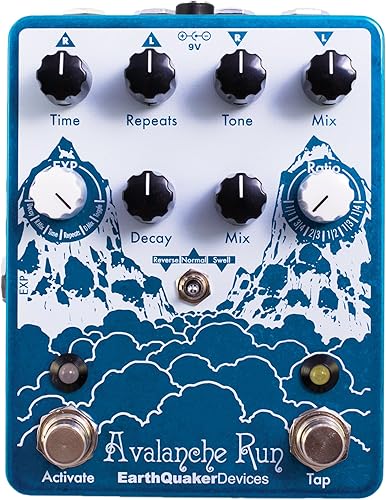
Next up is EarhQuaker’s Avalanche – a hybrid of a Delay and Reverb pedal. That being said, it utilizes the benefits of both pedal types and combines them into a single package.
Delay controls feature time which governs the time of delays and the repeat function which is quite self-explanatory. The tone affects the tonal qualities of the delayed sound and won’t have any impact on the reverberations while the mix controls the overall volume of the signal.
Reverb controls include the decay which increases or decreases the length of reverberations decay and another mix button which, this time, governs the presence of reverb’s volume in your chain.
There are numerous other little features and options for you to toy around with, but overall, this is among the best reverb pedal models the market has to offer – it looks cool, it’s easy to use it, and it doesn’t cost too much (when compared to high-end models, that is).
- Delay and Reverb combo pedal
- Easy to use controls
- Sturdy stompbox
- Looks quite great
- Moderately affordable
- No notable flaws, apart from microscopic labels in the center (Reverse, Normal, Swell)
3. Ehx Holy Grail Nano

Electro-Harmonix’ Holy Grail NANO is one of the most plain reverb pedals out there. It features three reverb types – including Flerb, Hall, and Spring, and a neat little Reverb button which is basically another term for “volume” in this case.
The brand refers to this pedal as the “spring reverb” pedal, despite it having other options – this leads us to the conclusion that this particular mode works the finest, or at the very least, the greatest effort was invested to make it the best mode available.
The Flerb isn’t so easy to figure out unless you play around with it a bit – it combines the flanger with spatial, ethereal reverberations which end up sounding quite uniquely and exquisitely. On top of that, you’ll get a neat power supply as a complementary feature.
This pedal is ideal for fresh guitarists that don’t want to peddle with their sound too much, but it’s otherwise applicable for nearly all music genres.
- Plain and straightforward design
- Exceptionally easy to use
- Well suited for beginner guitarists
- Applicable in nearly all music genres
- Affordable
- Not really versatile
- Can’t compare to high-end models.
4. MXR M300

Despite its petite appearance, MXR’s M300 reverb pedal is surprisingly versatile. It’s one of the smallest reverb pedals in our review, as well as one of the easiest to use due to its plain feature outfit.
First of all, it features a completely analog dry path option which negates any and all reverberations whatsoever. After using this option, you can fine tune the reverb you want to get out from a total of six types – plate/spring, epic/mod, and room/pad. Double click to get the second option, click once for the first.
There are three knobs onboard, the decay for precise sound loss customization, the tone for fine tuning, and mix for overall volume. Basically, this is a neat little pedal which does a major bang for the buck – it’s best used for hard rock and pop, but it would work like a charm for other music genres as well.
- Decently versatile with 6 reverb types
- Quite affordable
- Analog dry path
- Very easy to use
- Might produce certain “squealing” sounds if the chain is too overburdened
5. Digitech Polara Lexicon

Digitech’s Polara Lexicon reverb pedal is the most peculiar model in our review. It’s slightly harder to use it than a regular reverb pedal due to confusing graphics on the base, but it doesn’t feature too many options and you shouldn’t have too much trouble figuring it out after a while.
The reverb types include room, reverse, modulated, hall, spring, plate, and halo, which is quite amazing for a low-end pedal. On the other hand, it features a compact design with a convenient vacuum-style pressing switch.
What’s really innovative about this pedal is that it features a twin set of ins and outs. You can easily modify your chain with these features, and you can rest assured that the signal will remain clean and uncompromised due to high-voltage method of operation. All in all, a great and versatile reverb pedal which holds a massive value for the buck.
- Exquisite outlook
- Several reverb types
- Hi-Voltage operation
- Great sound
- Not that easy to use, the graphics might confuse you in the beginning
6. Zoom MS-70CDR

Zoom’s MS-70CDR Multi-Stomp pedal is very versatile, but alas, quite hard to use in general. It’s a combo of chorus, delay and reverb, all within a small, miniature stompbox.
Getting used to it might require some time, as the buttons are labelled but unnamed, which certainly makes things a bit harder. Anyhow, the LCD screen tells you which option you’ve selected, so it’s not too much of a deal breaker.
There’s a total of 86 types of effects on board, including sixteen chorus effects, twenty six delays, twenty nine reverbs, and fifteen “miscellaneous” types (flangers, vibratos, phasers, tremolos, modulators, and such). One of the main reasons for its low price is apparently the hard-to-use concept, but it’s certainly worth the buck.
- Clearly visible LCD-lit screen
- A plethora of effects onboard
- One of the most affordable high-quality reverb pedals
- Four ins and outs (as opposed to conventional two)
- Mediocre sound quality
- Doesn’t excel in any particular field of performance (apart from affordability)
Summary
Reverb pedals are absolutely necessary if you want to make it big in the music world. They offer uniqueness to your sound and often come at decent, affordable prices. They might be a bit harder to use than, let’s say distortion pedals, but once you’re get used to your reverb pedal, you’ll feel as if your musical perception has been reinvented.
Our top picks all deserve the label of the “best reverb pedal”, but Eventide’s “Space” reverb pedal sticks out from the rest. It does cost quite a bit, true, but it simply excels in every single field of performance – it’s among the sturdiest, best sounding, highest value reverb pedals out there. We hope you liked it, as we certainly did!